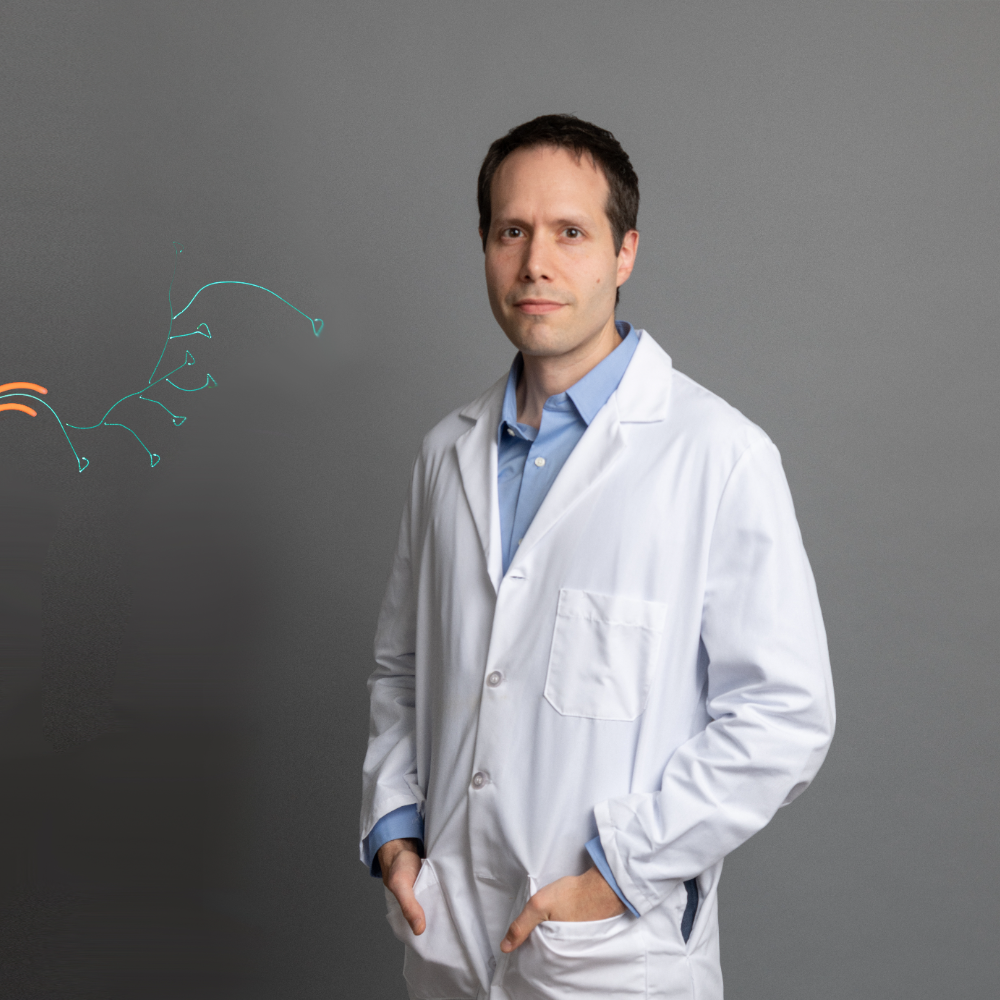
Faculty
Jonathan Fisher, Ph.D.
Associate Professor, Physiology Biomedical SciencesAssociate Professor, Physiology School of Medicine

As the director of the Neurosensory Engineering Lab, Jonathan A. N. Fisher, Ph.D., focuses on basic and translational neurotechnology, with an emphasis on traumatic brain injury and auditory processing. He is the recipient of several awards and honors including a Blavatnik Award for Young Scientists. Dedicated to innovation in educational technology, Dr. Fisher has pioneered the use of planetarium environments and virtual reality to explore neuroimaging data.
Education
- B.A., Physics and Astronomy, University of Pennsylvania
- Ph.D., Physics, University of Pennsylvania
- Postdoctoral Fellowship, Neuroscience, The Rockefeller University
Areas of Expertise
- Portable neural diagnostics and therapy
- Auditory processing
- Neuroimaging data visualization
- Sensory Neuroscience and Neuroprosthetics
Honors and Awards
- 2024, New York Medical College School of Medicine Student Senate Class of 2024 Citations of Excellence
- 2020, Rising Star Dean’s Faculty Award, New York Medical College
- 2015, FDA / Center for Devices and Radiological Health (CDRH) Director’s Special Citation Award
- 2015, Japanese Science and Technology Forum Future Leader Representative for North America
- 2013, Winner, Blavatnik Award for Young Scientists, Blavatnik Family Foundation / New York Academy of Sciences
- 2006, Optical Society of America New Focus / Bookham Student Award
- 2006, GAPSA-Provost's Award for Interdisciplinary Innovation, University of Pennsylvania
- 2001, Nominated for Dean’s Award for Distinguished Teaching, University of Pennsylvania
- 2000, William E. Stephens Memorial Prize (U. Penn Physics Department Award “Awarded to graduating physics major demonstrating the most promise as a scientist”
Publications
- Jethe JV, Shen YY, La Gamma EF, et. al. "Noninvasive optical monitoring of cerebral hemodynamics in a preclinical model of neonatal intraventricular hemorrhage." Frontiers in pediatrics, 13(), (2025) 1512613. doi: 10.3389/fped.2025.1512613
- Shen YY, Jethe JV, Reid AP, et. al. "Label free, capillary-scale blood flow mapping in vivo reveals that low-intensity focused ultrasound evokes persistent dilation in cortical microvasculature." Communications biology, 8(1), (2025) 12. doi: 10.1038/s42003-024-07356-2
- Jethe JV, Shen YY, LaGamma EF, et. al. "Noninvasive optical monitoring of cerebral hemodynamics in a preclinical model of neonatal intraventricular hemorrhage." bioRxiv : the preprint server for biology, (), (2024) . pii: 2024.10.16.618768. doi: 10.1101/2024.10.16.618768
- Shen Y, Jethe JV, Reid AP, et. al. "Label free, capillary-scale blood flow mapping in vivo reveals that low intensity focused ultrasound evokes persistent dilation in cortical microvasculature." bioRxiv : the preprint server for biology, (), (2024) . pii: 2024.02.08.579513. doi: 10.1101/2024.02.08.579513
- Jang JH, Solarana K, Hammer DX, et. al. "Dissecting the microvascular contributions to diffuse correlation spectroscopy measurements of cerebral hemodynamics using optical coherence tomography angiography." Neurophotonics, 8(2), (2021) 025006. doi: 10.1117/1.NPh.8.2.025006
- Fisher JAN, Gumenchuk I, Rogovin OS, et. al. "Asymmetric, dynamic adaptation in prefrontal cortex during dichotic listening tasks." Neurophotonics, 7(4), (2020) 045008. doi: 10.1117/1.NPh.7.4.045008
- Ye M, Solarana K, Rafi H, et. al. "Longitudinal Functional Assessment of Brain Injury Induced by High-Intensity Ultrasound Pulse Sequences." Scientific reports, 9(1), (2019) 15518. doi: 10.1038/s41598-019-51876-5

